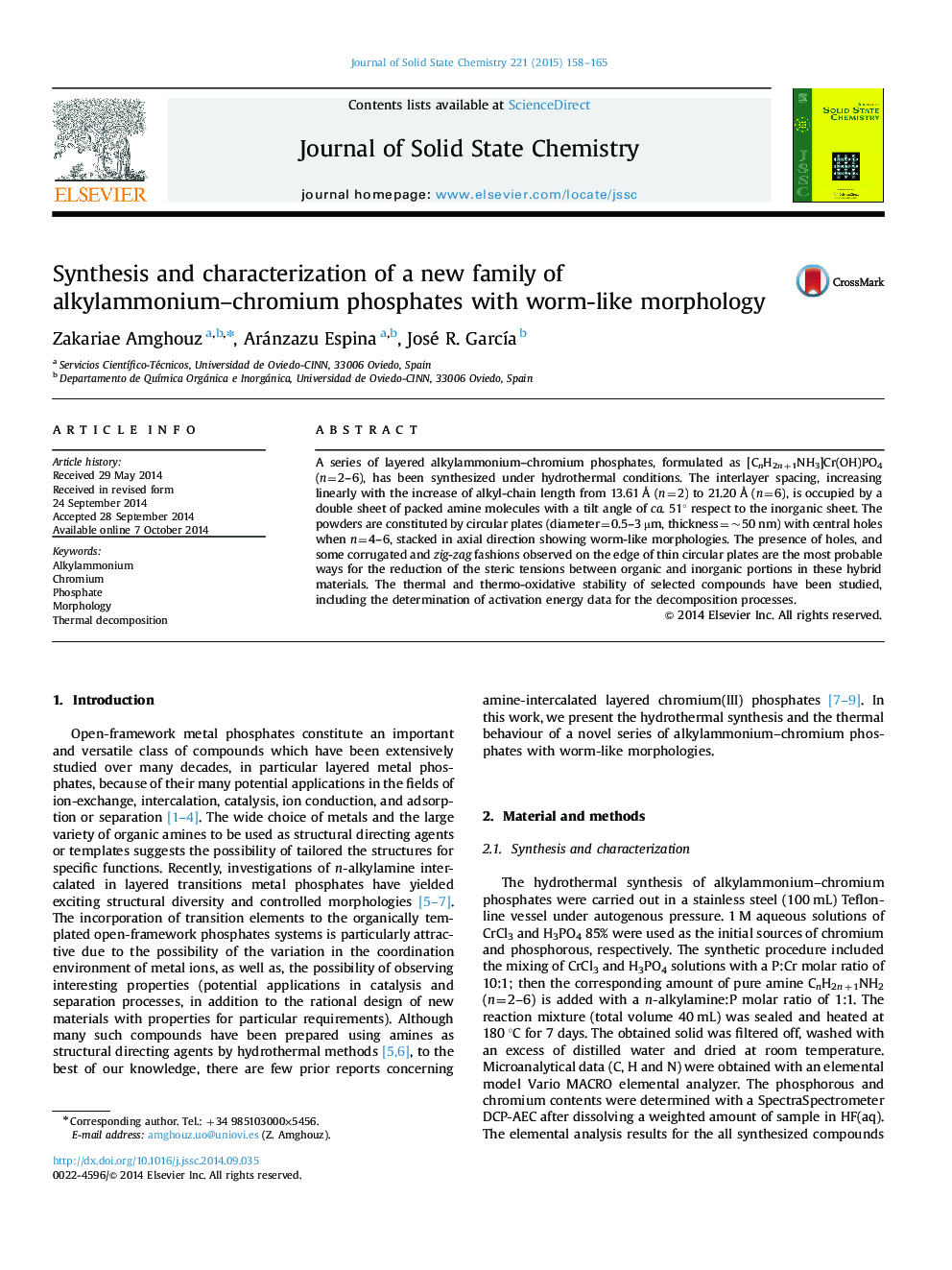| Article ID | Journal | Published Year | Pages | File Type |
|---|---|---|---|---|
| 1329617 | Journal of Solid State Chemistry | 2015 | 8 Pages |
•A series of alkylammonium–chromium phosphates has been obtained by the hydrothermal method.•The interlayer spacing increases linearly with the increase of alkyl-chain length.•The interlayer spacing is occupied by a double sheet of packed amine molecules.•The powders are constituted by stacked circular plates showing wormlike morphology.•Thermal behaviour depends on the atmosphere used and the intercalated amine.
A series of layered alkylammonium–chromium phosphates, formulated as [CnH2n+1NH3]Cr(OH)PO4 (n=2–6), has been synthesized under hydrothermal conditions. The interlayer spacing, increasing linearly with the increase of alkyl-chain length from 13.61 Å (n=2) to 21.20 Å (n=6), is occupied by a double sheet of packed amine molecules with a tilt angle of ca. 51° respect to the inorganic sheet. The powders are constituted by circular plates (diameter=0.5–3 µm, thickness=~50 nm) with central holes when n=4–6, stacked in axial direction showing worm-like morphologies. The presence of holes, and some corrugated and zig-zag fashions observed on the edge of thin circular plates are the most probable ways for the reduction of the steric tensions between organic and inorganic portions in these hybrid materials. The thermal and thermo-oxidative stability of selected compounds have been studied, including the determination of activation energy data for the decomposition processes.
Graphical abstractA novel series of layered alkylammonium–chromium phosphates, [CnH2n+1NH3]Cr(OH)PO4 (n=2–6), was obtained and characterized. The interlayer spacing, increasing linearly with the increase of alkyl-chain length, is occupied by a double sheet of packed amine molecules. The powders are constituted by circular plates (diameter=0.5–3 µm, thickness=~50 nm) with central holes when n=4–6, stacked in axial direction showing worm-like morphologies.Figure optionsDownload full-size imageDownload as PowerPoint slide
